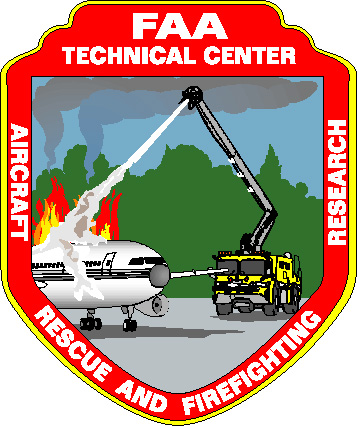Aircraft Rescue & Firefighting Technology
 The Federal Aviation Administration (FAA) has a goal to increase aircraft passenger survivability during a postcrash fire. The FAA, through the Airport Improvement Program (AIP), provides financial assistance to FAA certified airports for the purchase of heavy rescue firefighting equipment. In addition, the FAA performs firefighting research in areas that will improve the effectiveness or better use of this same firefighting equipment.
The Federal Aviation Administration (FAA) has a goal to increase aircraft passenger survivability during a postcrash fire. The FAA, through the Airport Improvement Program (AIP), provides financial assistance to FAA certified airports for the purchase of heavy rescue firefighting equipment. In addition, the FAA performs firefighting research in areas that will improve the effectiveness or better use of this same firefighting equipment.
The analysis of recent aircraft accidents involving external fuel fires has shown that although external fires are effectively extinguished, fires within the aircraft fuselage are difficult to control with existing equipment and procedures. Large amounts of smoke laden toxic gases and high temperature levels in the passenger cabin can cause delays in evacuation and pose a severe safety hazard to fleeing passengers. Firefighters put themselves at great personal risk when attempting to extinguish any interior fire using hand-held attack lines.
At the FAA William J. Hughes Technical Center, located near Atlantic City, NJ, the Airport Technology Research and Development Branch's Aircraft Rescue and Fire Fighting (ARFF) Research Program works to advance firefighting state of the art to provide an increase in passenger survivability under the extreme harsh conditions of a postcrash fire.
The ARFF R&D Program is currently expanding the capabilities of the National Airport Fire-Extinguishing Agent Performance Test Facility located at the Technical Center. The test facility consists of three parts:
- A full-scale, ground spill fire facility to test new fire-extinguishing agents that retains waste and spent fuel without endangering the environment.
- A full-scale aircraft facility with a planned second-level passenger configuration to test new equipment, firefighting tactics, and strategies.
- The FAA’s advanced High-Performance Research Vehicle (HPRV) with its 55-foot elevated boom and cabin skin penetration system.
- The FAA also has a new 2500 gallons, 6X6 ARFF vehicle to serve as the program research platform for new technologies.
The ground spill fire facility measures 200 x 120 feet and will be used to assess the performance of unique fire-extinguishing agents used for specialized airport fire protection needs. This facility will be used to develop new performance standards for all classes of extinguishing agents including dry chemical and Halon alternative clean agents. The facility is concrete protected with a 5000-gallon collection containment vault.
A large military surplus C-133 cargo aircraft has been fire hardened and configured to test agent distribution and fire performance in several unique fire scenarios including interior fires, cargo fires, and eventually second-level fires. The specialized aircraft facility measures 190 feet in length, 12 feet in diameter, and 26 feet in height.
Click below to visit:

Contact Project Lead: Keith Bagot, ATO-P (formerly AAR-411)
Last Update: 05/18/09